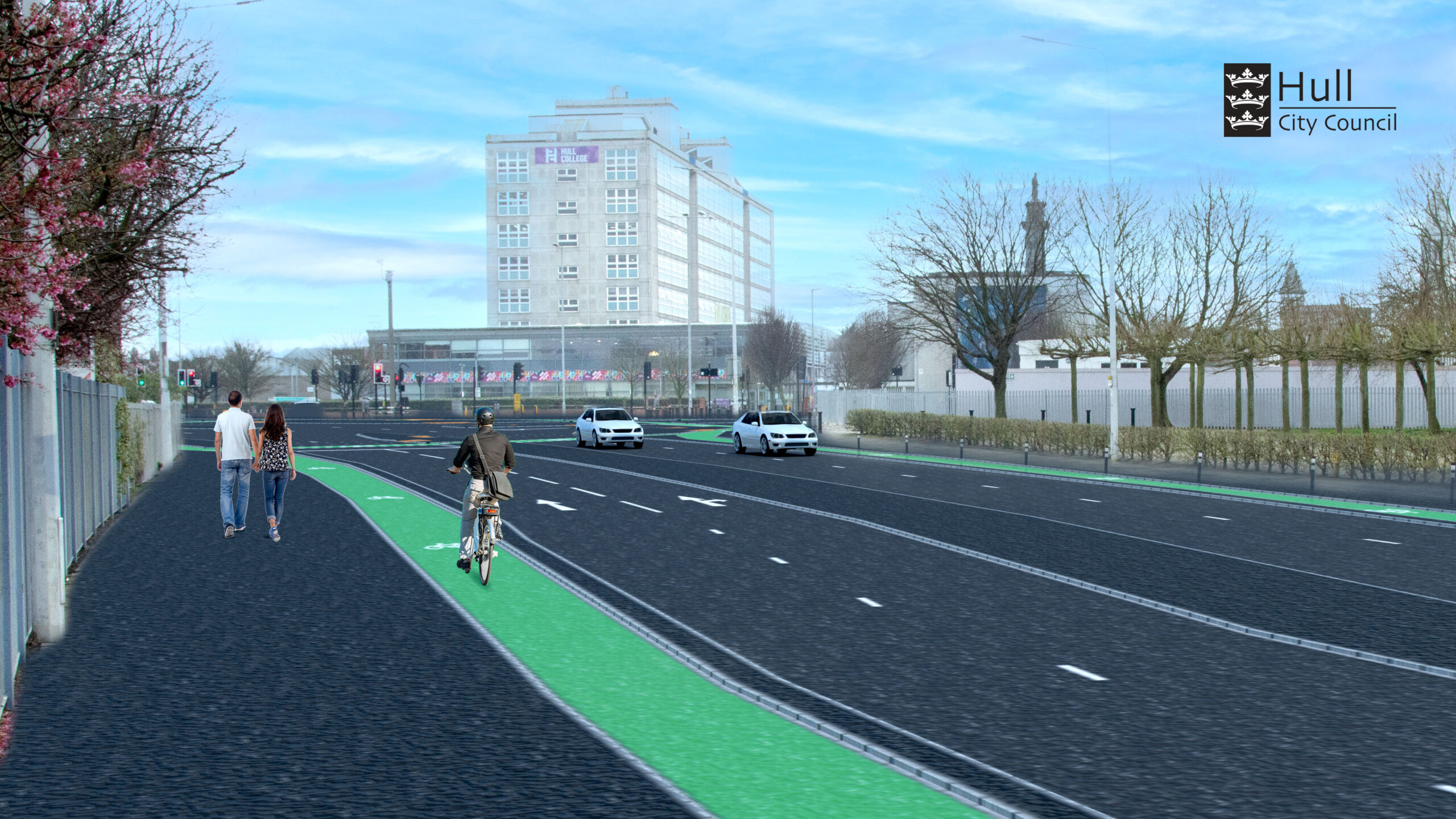Hull City Council has launched a six-week engagement exercise to seek feedback from the public and other stakeholders on the proposed final design of the new cycle scheme planned for Freetown Way.
Starting today (Monday 20 May), people can view and comment on the plans, both digitally, via the council’s YourSay website, or in-person at a series of drop-in sessions planned for June.
Working collaboratively with the public and other stakeholders, the updated design for the scheme, which is now being consulted on, follows an initial round of consultation, which took place in 2022, that incorporated various feedback received, including a more simplified design for the junction at Blundell’s Corner.
Securing final comments on the scheme’s design is an important milestone and will help the council finalise the necessary documents for tender. A contractor will then be appointed to deliver the scheme, which is anticipated to start on site in spring 2025.
The scheme will see the footways on both sides of Freetown Way widened, between Witham and Blundell’s Corner, to accommodate safe, off-road cycle lanes, providing separated areas for both cyclists and pedestrians.
The scheme would also see the city’s first CYCLOPS junctions installed at Blundell’s Corner and Witham as well as Freetown Way’s junctions with Wright Street, Charles Street, Caroline Street/Worship Street and George Street.
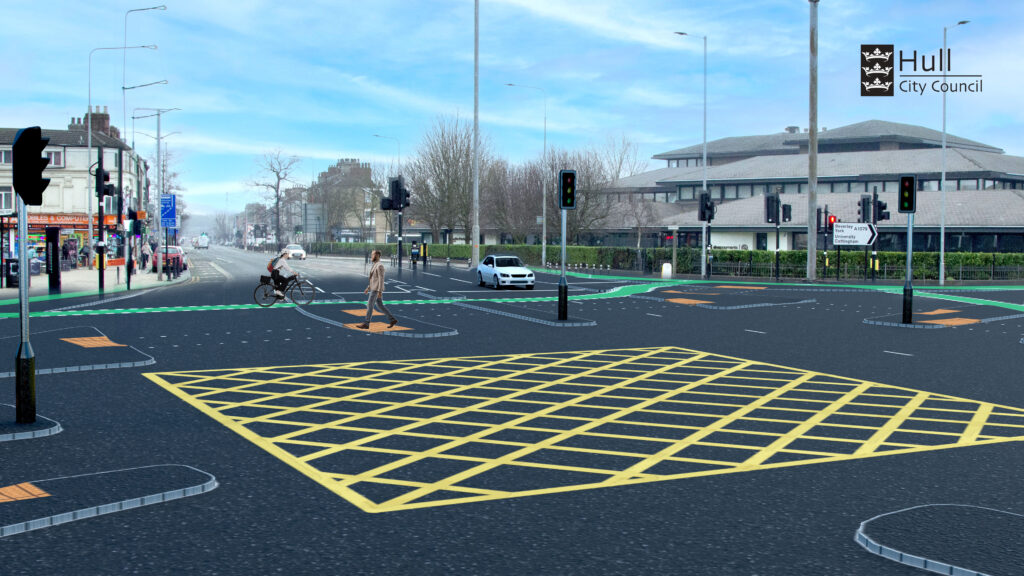
The scheme is funded by an allocation from Active Travel England’s Active Travel Fund (ATF), which the council successfully bid for in May 2023. In addition to Freetown Way, the council will also deliver another cycle scheme on Preston Road.
Councillor Mark Ieronimo, cabinet portfolio holder for transportation, roads and highways, said: “The updated designs for the new cycling infrastructure on Freetown Way are exciting and should help traffic flow better. We would like to thank our residents and other stakeholders for their input in the process that has produced these final designs and we are now keen to hear what people have to say about the scheme before we finalise documentation for tender.
“From speaking to our residents, and through responses to the traffic and travel survey, undertaken in 2022, we know that improving the city’s transport network is an important priority for the city. Residents want us to provide the facilities needed to support greater choice when it comes to travel options and we’re going to do our best to deliver that.
“The plans for Freetown Way will not only provide better facilities for cyclists, but they will also deliver a range of pedestrian improvements while restoring the road layout to two lanes in each direction.
“This scheme, and the other planned for Preston Road, show we’re both committed to tackling issues with traffic and to promoting more active and sustainable forms of travel, like walking and cycling.”
To view and comment on the scheme plans, visit Freetown Way Cycle Scheme – Your Say
In addition to being able to view and comment on the plans online, the council will be hosting a series of engagement events in locations across the city, including at:
- Hull History Centre – Tuesday 4 June – 10am-4pm
- Trinity Market – Tuesday 11 June – 10am-3pm
- Hull College – Thursday 13 June – 11am-4pm
- St Stephens Shopping Centre – Thursday 27 June – 11am-7pm
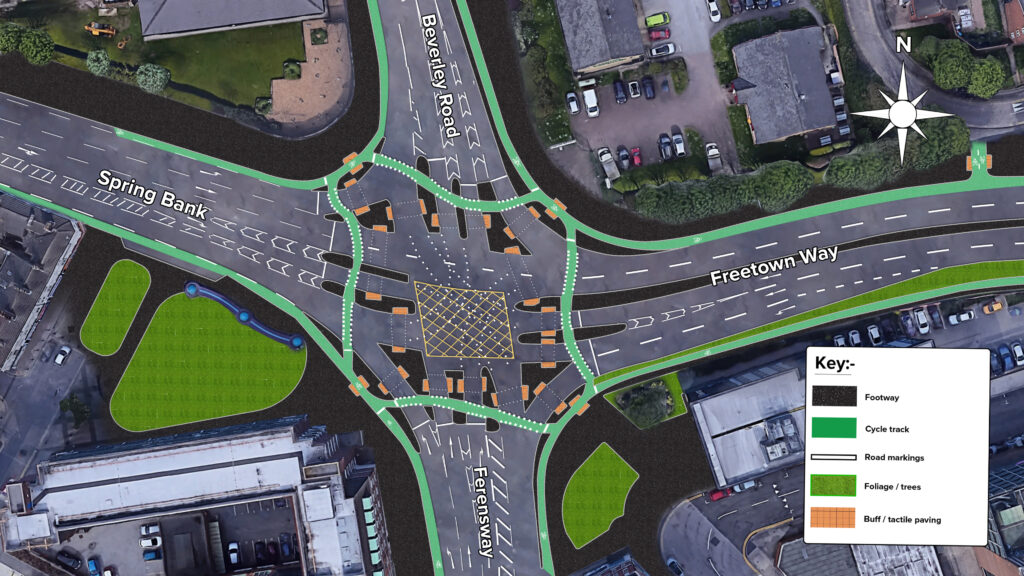
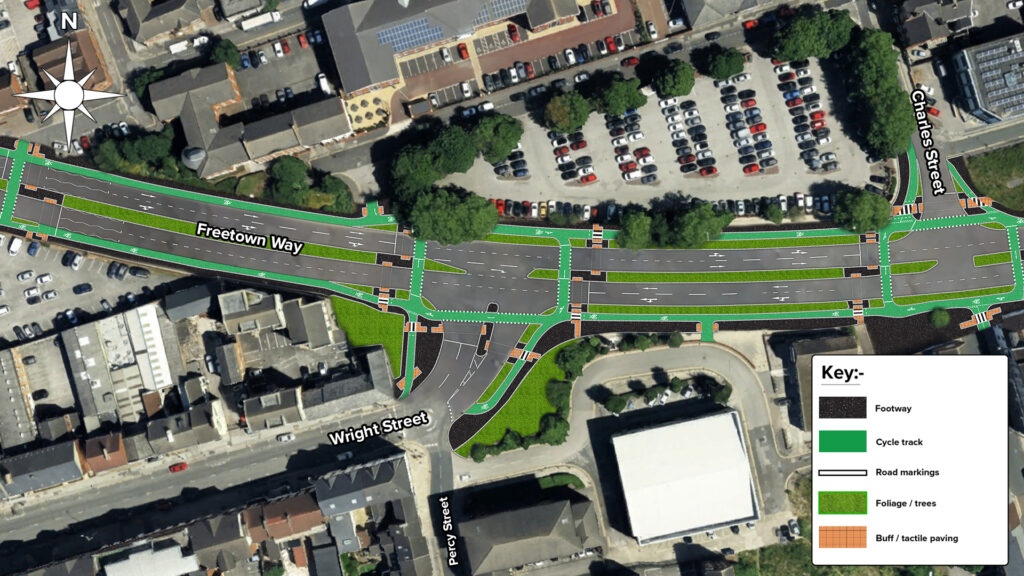
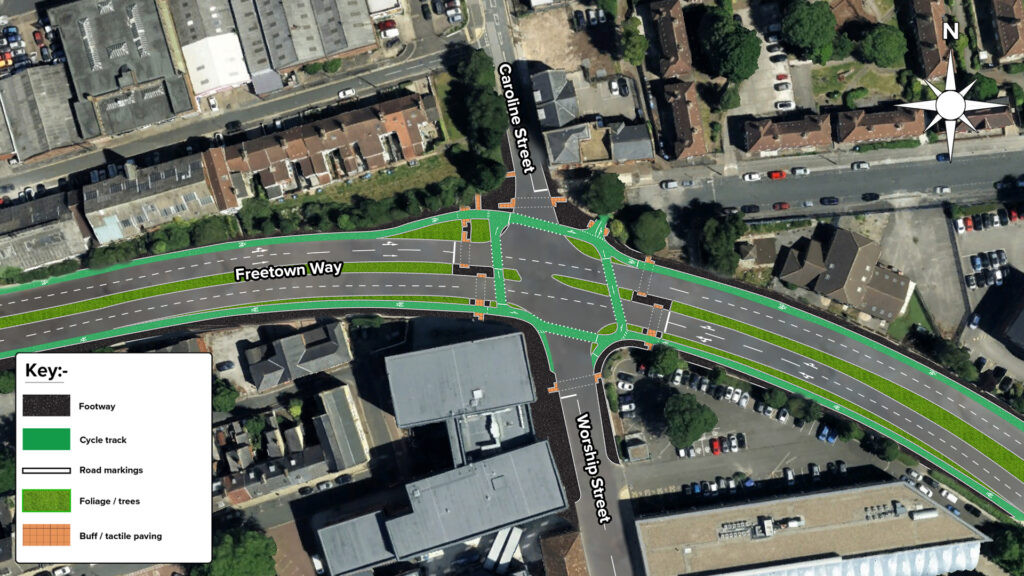
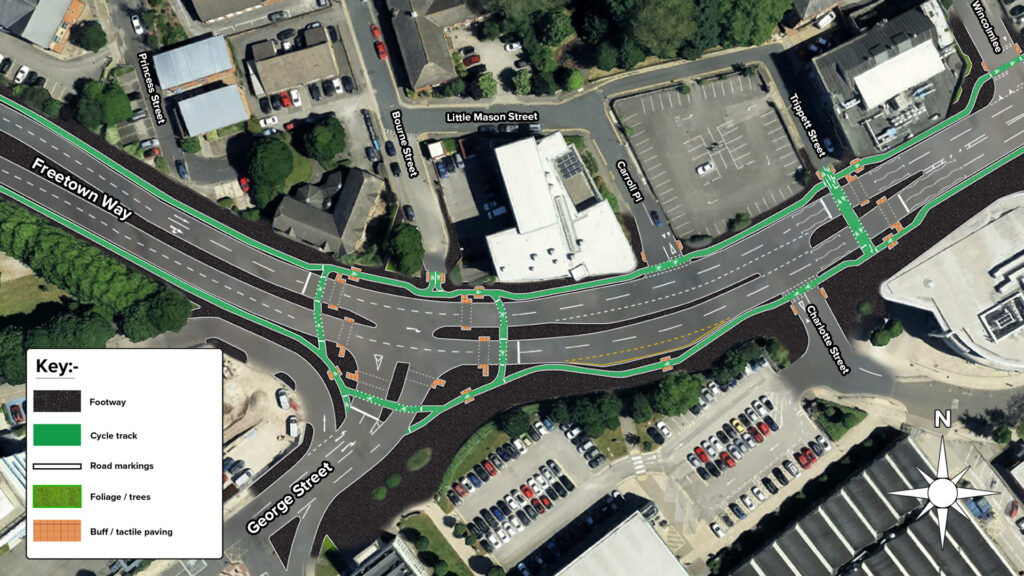

WHAT IS A CYCLOPS JUNCTION?
CYCLOPS junctions, or a cycle-optimised protected signals junction, are appearing more and more in cities and towns across the UK.
The unique design of the CYCLOPS junction completely separates pedestrians and cyclists from motor traffic at junctions, reducing the possibility of collisions or conflict. Pedestrians are also able to get where they want to be in fewer stages with more space to wait than on other junction designs.
As well as minimising the number of potential signal phasing/stages to allow for movements around the junction, the CYCLOPS has other important benefits too.
These include:
- cyclist and pedestrian phases can run simultaneously
- pedestrian crossing times are shorter and closer to desire lines, including the potential for diagonal pedestrian crossings
- cyclists have protected right turn on a gentle radius and can filter left without signal control
- journey times for all modes navigating the junctions, including motor traffic, are not negatively affected.
HOW DOES IT WORK?
There are two movement ‘rings’ around the junction. One ‘ring’ of the junction is a cycle lane, acting like a roundabout with signal-controlled crossings. This will allow those who cycle to cross over the junction or make right turns unrestricted by cars or foot traffic, creating a safe route to travel.
The other ‘ring’ of the junction is dedicated to pedestrians, with those walking and cycling getting the same green light signal in all directions at the same time, but on a separate ring of paths in the middle of the junction.
There are well-defined zebra crossings on each side of the junction to provide a safe place to cross the cycle lane for pedestrians.
All motorised traffic stops at the lights whilst cyclists and pedestrians have their green light signal.
Once pedestrians and cyclists have passed, motorised traffic will get the green light signal to continue driving and use the junction like normal.
